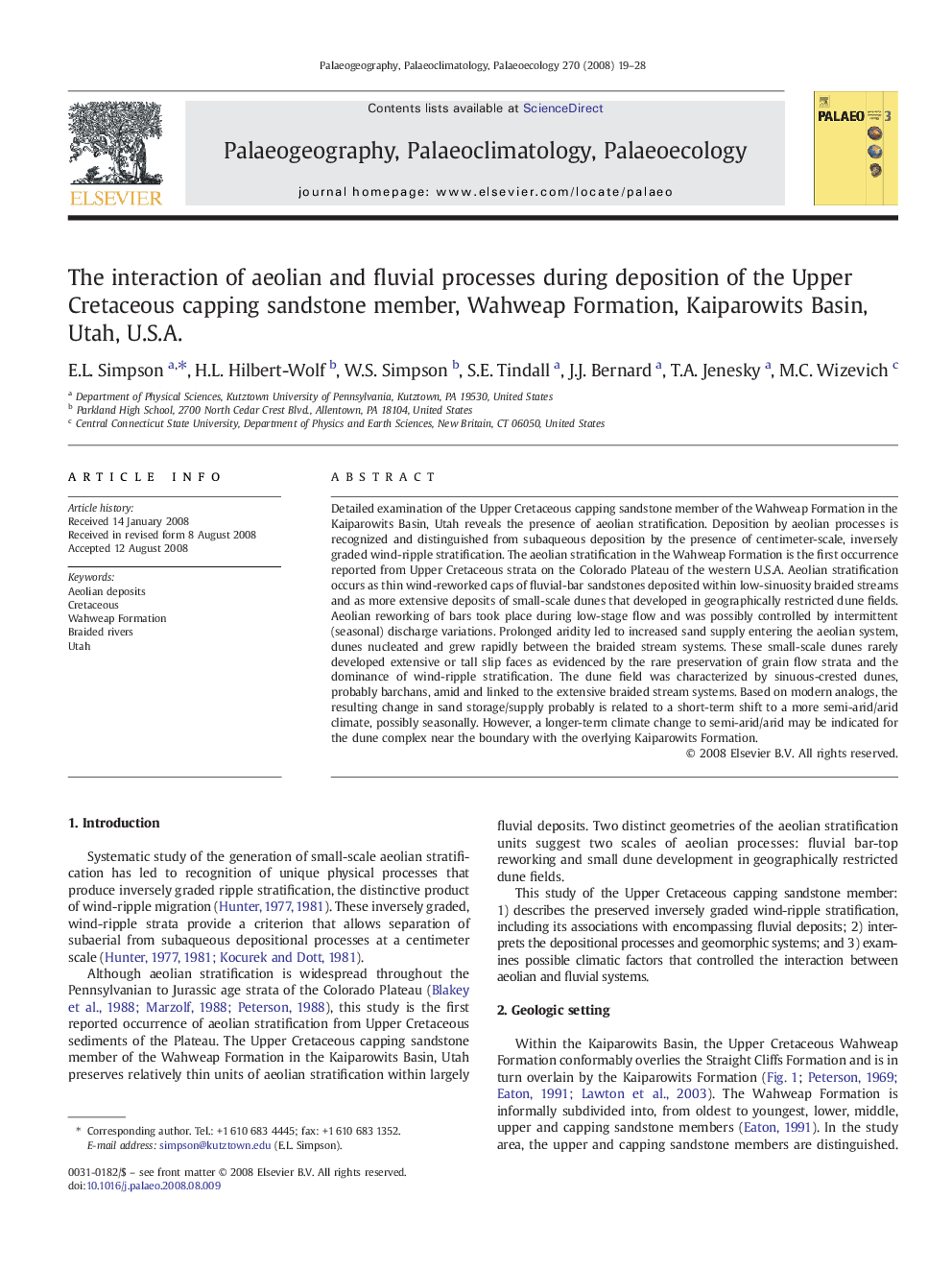| Article ID | Journal | Published Year | Pages | File Type |
|---|---|---|---|---|
| 4468314 | Palaeogeography, Palaeoclimatology, Palaeoecology | 2008 | 10 Pages |
Detailed examination of the Upper Cretaceous capping sandstone member of the Wahweap Formation in the Kaiparowits Basin, Utah reveals the presence of aeolian stratification. Deposition by aeolian processes is recognized and distinguished from subaqueous deposition by the presence of centimeter-scale, inversely graded wind-ripple stratification. The aeolian stratification in the Wahweap Formation is the first occurrence reported from Upper Cretaceous strata on the Colorado Plateau of the western U.S.A. Aeolian stratification occurs as thin wind-reworked caps of fluvial-bar sandstones deposited within low-sinuosity braided streams and as more extensive deposits of small-scale dunes that developed in geographically restricted dune fields. Aeolian reworking of bars took place during low-stage flow and was possibly controlled by intermittent (seasonal) discharge variations. Prolonged aridity led to increased sand supply entering the aeolian system, dunes nucleated and grew rapidly between the braided stream systems. These small-scale dunes rarely developed extensive or tall slip faces as evidenced by the rare preservation of grain flow strata and the dominance of wind-ripple stratification. The dune field was characterized by sinuous-crested dunes, probably barchans, amid and linked to the extensive braided stream systems. Based on modern analogs, the resulting change in sand storage/supply probably is related to a short-term shift to a more semi-arid/arid climate, possibly seasonally. However, a longer-term climate change to semi-arid/arid may be indicated for the dune complex near the boundary with the overlying Kaiparowits Formation.
